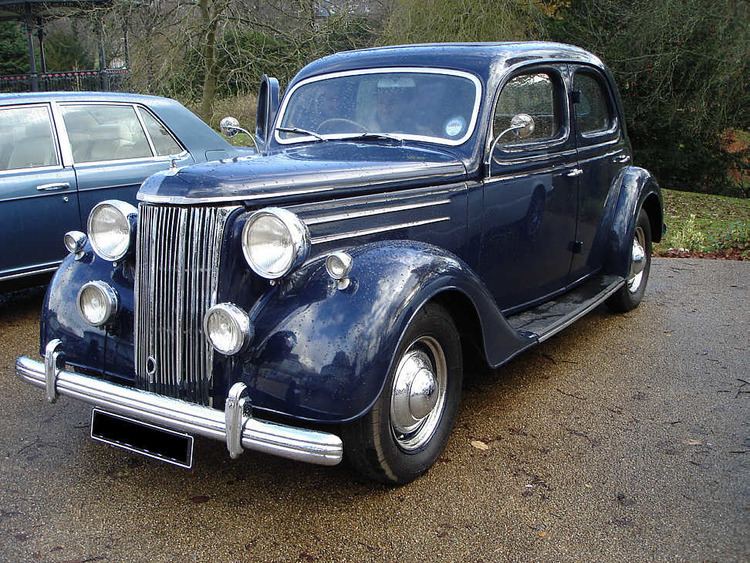Production 1947–1951 | Also called Ford V8 Pilot | |
 | ||
Assembly United KingdomAustralia Class Mid-size / Large family car (D) Body style 4-door saloon4-door estate car2-door pick-up2-door coupe utility | ||
The Ford Pilot Model E71A is a medium-sized car that was built by Ford UK from August 1947 to 1951. It was effectively replaced in 1951 with the launch of Ford UK's Zephyr Six and Consul models, though V8 Pilots were still offered for sale, being gradually withdrawn during that year. During the period of manufacture 22,155 cars were produced.
Contents
Engine and running gear
The Pilot was the first large post-war British Ford. It was based on the pre-war 22 hp Model 62 chassis, and was initially offered with the 2227 cc side-valve engine from the 1939 model. These initial engines were Canadian-made surplus stock from wartime production of Bren gun carriers. The engine was soon replaced: most Pilots were fitted with a more generously powered 3622 cc, 90 hp (67 kW) sidevalve V8 engine, having a stroke of 92.25 mm (3.6 in) and bore of 79 mm (3.1 in) with single Solex carburettor. This is essentially the same 'low water pump, 21 stud' engine as fitted to the North American 1937 / 38 models, but with an additional frost plug hole cast into the rear of each cylinder bank. This engine was also used in Thames trucks. Sadly, the car retained 6-volt electrics. The gears were changed by means of a gear lever on the steering column; the gearbox itself had three forward ratios and one reverse. Steering used a form of worm and roller system known as a Marles steering box with an "hour-glass cam and a double roller". The car was evidently seen as rather old-fashioned even at the time, but its front brakes were hydraulically controlled. The rear brakes were cable-operated.
Most Pilots were four-door saloons, but Estate and pick-up versions were produced, the latter for the export market only. The front windscreen could be opened for ventilation pivoting about a top hinge. Production ended in 1951 when the Pilot was replaced by the Ford Zephyr.
Like other Fords of the era, the Pilot used vacuum-driven wipers taking their power from the engine manifold; as a result they tended to slow drastically or even stop when full throttle was used under load. The car was reputed to be capable of 80 mph (130 km/h) and have a 0 to 60 mph (96 km/h) time of 21 seconds and return 18 miles per imperial gallon (16 L/100 km; 15 mpg‑US).
Australian assembly
Ford Australia introduced the Pilot onto the Australian market in 1949, importing the model in both fully assembled and semi-knocked down form. Initially dearer than the Canada-sourced Ford Custom V8, its price was gradually reduced in relative terms until it was cheaper than the Custom. A coupe utility variant was also produced.
Motor sport
The Pilot achieved some sporting success and Ken Wharton drove one to victory in the 1950 Tulip Rally and in the 1950 Lisbon International Rally.
